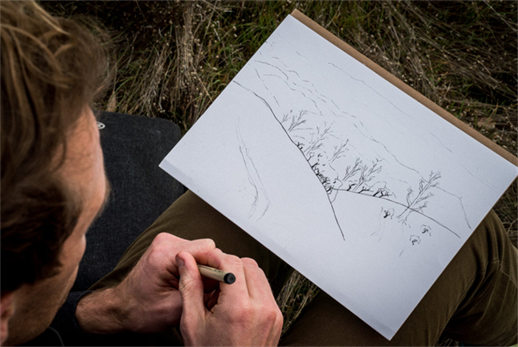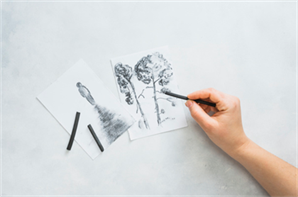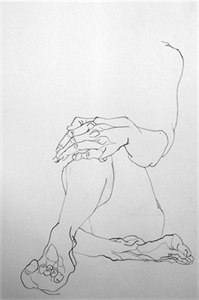Drawning Techniques
There are many drawing techniques to learn. How to hold a pencil to draw more efficiently? This question will be asked by every novice artist.
The correct way is to hold it between the thumb and forefinger, supported by the middle finger.
With chalk or pastels you would only use the thumb and middle finger. This may seem a little awkward at first but after a little practice you will soon see how easy this drawing technique becomes.
Try and not rest your handaa or palm on your drawing paper which causes smudges, use the tip of your small finger and wrist bone to draw smooth curves and shapes. There should be plenty of wrist movements with smaller finger movements.
One important point here is to always keep your pencil sharp, very sharp, even if you are using soft leaded pencils. A recommendation is to use one of those battery operated sharpeners, they are clean to use, no mess and your pencil point is pin sharp. This is the way to keep your drawings clean, neat and crisp.
You may ask “What type of pencil should I use?” There is a large variety to choose from in quality and hardness. Don’t buy the cheapest and not the most expensive to start off with. Go for the Steadtler 2B to 4B…and take some care with all lead pencils that you don’t drop them (the lead breaks inside which is frustrating when you sharpen them.)
We have a whole range of goodies coming under drawing techniques. There’s lots to master but I will illustrate these drawing techniques wherever possible.
Charcoal is the ideal choice for sketching freely and for creating soft thick lines. Also charcoal can fill an area rapidly with darker values and becomes more “painterly” than using a pencil.
Okay, let’s go onto the next important thing of “What are we going to draw?” There are millions of things to draw, some of them easy and others very difficult.
If you are new to drawing then practice circles with a complete swing of your wrist without taking your pencil off the paper. If you feel confident then draw something you are passionate about. Try drawing anything with a box-like shape, these should be fairly easy.
A fun way to start off is to draw blindly —that’s drawing something without taking your eyes off the thing you are drawing—you only look at what you are drawing. This can teach you to really observe what you are drawing. See “blind” drawing below.
You don’t have to be a perfectionist with your first collection of drawings, in fact it builds more confidence if you are not—you should never seek perfectionism in drawing, why? There’s no such thing as a perfect “drawing.”
“This drawing of mine, does it tell me or other people what it is or represents?” In other words, does it communicate something? If it does, then it is a good drawing!
Developing your drawing skills improves your confidence and ability to observe actually what is in front of you.
So what makes a good drawing and what make a bad one? Really, it depends entirely on who is looking at your masterful drawing. To some, it may seem beautiful, to others quite awful. These viewpoints are based solely on people’s experiences, education, culture and even attitudes towards life. An art gallery owner will have (sometimes) a vastly different viewpoint than a supermarket manager.
All artists should have a grasp of others’ viewpoints to be successful (if you are pursuing drawing as a career) so you’ll need to adjust your technique to the audience you are aiming at. There’s a lot more to this which I will be writing about on other pages here.
You can’t draw anything worthwhile if you are bent over with your drawing pad lying flat. You have to be able to “see” your drawing from a distance—that’s why artists stand back from their easel to “get the big picture” where faults show up readily. A good trick is to view your work in a mirror where you will spot anything that does not look quite correct. Also if you are bent over it restricts your hand and arm motion—you need a lot of freedom in sketching.
So a good drawing position is to sit with a straight back while holding your pencil or charcoal at arms length. Your drawing support should be as upright as possible—and if you can’t afford an easel then rest your drawing board at about 60 degrees on the back of a chair while the board rests on your knees.
Simple Drawing Techniques For The Beginner
Charcoal Drawing
Line Art Drawing
Fashion Sketching
Online Sketching


